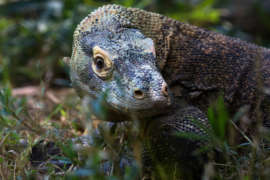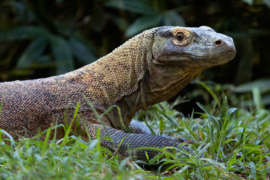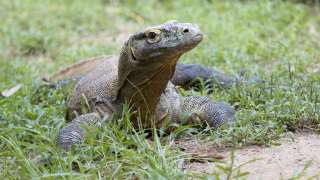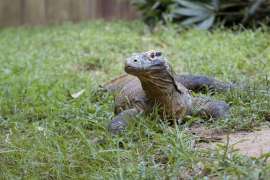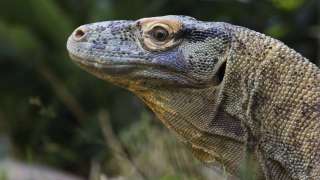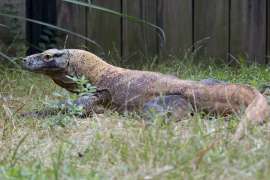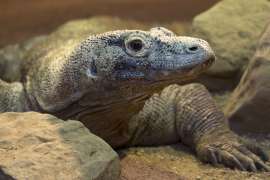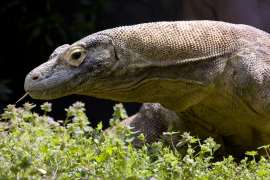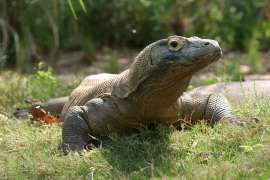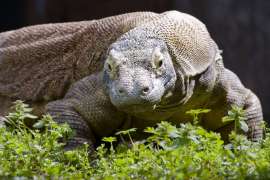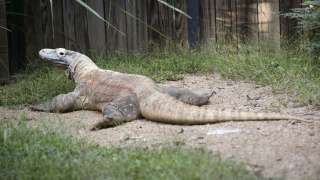Komodo Dragon
Komodo Dragon
Komodo dragons are Earth’s largest living lizards and are part of the large family known as monitor lizards.
Varanus komodensis
Carnivore
Southeastern Asia [VIEW MAP]
Dry Forests
Our Komodo dragon can be seen almost anytime, either in his outdoor habitat during the summer months or in his indoor habitat during the cooler months.
Photos and Videos
Komodo dragons are capable of bringing down prey as large as deer. They also scavenge for carrion. Although they generally do not threaten humans, a Komodo dragon bite causes severe tissue damage inflicted by the lizard’s large, serrated teeth.
Younger Komodo dragons are active climbers. Larger individuals cannot climb but do excavate large burrows.
While Komodo dragons were long rumored to harbor bacterial colonies in their mouths, thus killing their prey via infections, this myth is not backed by data and is now dismissed by scientists. Because of the severity of a dragon bite, however, infection may occur.
Komodo dragons lead solitary lives, with pairs coming together briefly during the mating season. Otherwise, they may encounter one another as they congregate at a larger carcass. The female digs a simple nest, deposits a dozen or two eggs, buries them, and moves on. The young, which are much more brightly-colored than adults, are self-sufficient upon hatching.
Our Komodo dragon can be seen almost anytime, either in his outdoor habitat during the summer months or in his indoor habitat during the cooler months.
This species is only known on a handful of small Indonesian islands, including Komodo, Rinca Flores, and a few other very small islands. Komodo dragons are good swimmers and have been observed swimming to adjacent islands.
This species is most commonly associated with open, dry habitats.
Wild diet includes a variety of small or large animals, including carrion. At the Zoo, we offer rodents, chickens or rabbits.
The Zoo Atlanta Herpetology Department has collaborated with investigators around the world to study various aspects of Komodo dragon biology. Most recently, we were part of a team investigating how the indoor and outdoor environments of dragons in zoos affect the microbial communities on their skin and in their digestive tract [learn more http://www.smithsonianmag.com/science-nature/komodo-dragon-colonizes-its-environment-its-bacteria-just-us-1-180960315/ ]. More recently, scientists have been working on investigating the cognitive, or problem-solving, abilities of Komodo dragons and their smaller relatives.

